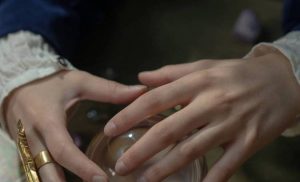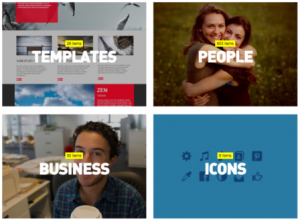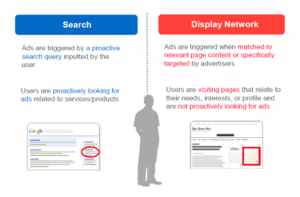In the age of the internet, one of the relevant issues prevalent among developers is web design. The ability to create an aesthetically appealing website for potential end-users has been a great challenge even in the 21st century. The current trend involves considering the needs of the stakeholders and the preference of the website developers, which should be in perfect harmony in order to produce an efficient website. Failure to do so would lead to a bad website design. With this, the ultimate question of how to create a good website design remains a hot topic among netizens.

Photo courtesy of jronaldlee via Flickr
This guide will attempt to provide web design tips that will surely aid developers in creating an effective website.
Know your purpose
A good website design should have a clear and concise purpose. May it be intended to entertain, inform, or raise awareness, the site is expected to encompass the reasons and motivations of the users—to exceed their expectations. Otherwise, it readily defeats the very purpose your site was created for in the first place.
In addition, every page of the website must contain exclusive content that is unique only to that page. They must not be identical to the home page or other pages, in order to avoid confusion.
Headings improve your message
In order to help users navigate through your website, it is vital to place headings that will guide them to the right page. This way, users are ensured easy access to the information they seek. This will also help you categorize the content of the website.
The use of headings provides a more effective alternative for presenting information on the website. Instead of lengthy sentences, headings and subheadings are more efficient to use and easier to read.
Choose your images wisely
Before reading articles or write-ups on any website, users have the tendency to look at the accompanying images first. Remember that people are visual creatures, and so a good web design must capitalize on high quality images to send messages across.
Your web images will also carry not only the message, but the overall branding of your site. It is advisable to upload high resolution photos to maintain the sophistication of your website. Photographs can also yield emotional connections with your intended audience, which in turn creates a stronger message.
Manage your colors carefully
The presence of colors is one of the key principles that make a web design look good. Like web images, your color palette also says something about the branding and message of the site. For instance, complementary colors may create balance and harmony, while contrasting ones are used for easier reading of text, considering the background. Aside from branding, colors also convey certain feelings that may affect and influence the website users. Colors are also used to emphasize a certain portion of the website that needs more attention compared to the rest of the site’s contents, and may have greater significance to some users.
One important tip in using colors is to limit them to a minimum of 3 color schemes: one for the background, one for text, and another for the headings and sub-headings. You don’t want your website to look like a 2nd grade story book after all.
Logos create impact
In terms of branding, logos are used to identify the group or organization maintaining and promoting the website. Logos stand for credibility and integrity with regard to the message the website upholds.
It is recommended that logos be placed on the upper left of the website, following the rule of thumb. This should be done for easier identification and recognition. Furthermore, high resolution logo images are definitely encouraged, which is ideally linked to your homepage for convenient navigation of users.
Keep it short and simple
Unless write-ups are not feature stories, keep the texts plain and precise. Users will not be interested in reading lengthy texts. Bear in mind to use user-friendly typefaces to ensure readability of articles.
The ideal font size for online reading is 16px, and developers are encouraged to stick to a maximum of 3 typefaces. Just make sure that these 3 typefaces are consistent across the website. Moreover, use a font size that will allow 15-20 words per line at 900 to 1000 pixels wide.
Breathe in, breathe out
A taken for granted principle of a good web design is proper positioning of visual elements. Now that you have the images, the texts, and other components of design, it is with utmost importance that you learn how to arrange them in harmony.
First thing to follow is the “F” Pattern Design. Most of what people see is in the top and left of the screen, but the right side of the screen is rarely noticed. In this regard, make sure to place the most relevant elements on the left side.
Also ensure that the placement of the text, photographs, and videos (if there are any) are not overlapping. This is done to avoid web cluttering. It is also advisable to create enough space between these elements to let the viewers absorb all the contents of the website.
Consider navigation
If you want users to enjoy their stay on your page, make sure that you have easy-to-use and functional navigational buttons. Navigation enables the users to move around the website in a hassle-free manner. An efficient navigation makes sure that the information the visitors are looking for are literally a few clicks away.
Some tactics to improve navigation on your website include using bread crumbs, designing clickable buttons, and following the “three click rule.”
What about the smartphones?
At present, web developers must take into account that smartphones have already become an alternative to computers. In this regard, websites must have high compatibility and accessibility to these phones. Developers should also ensure that there is a web version available for mobile users, considering resolution, screen widths, web layout, etc. In this way, the websites are guaranteed to be mobile-friendly; hence, increasing the probability of user visits.
The overall presentation of your website defines the identity of the web developer. This guide will definitely enable you to turn a relatively unappealing website design into something more desirable, and hopefully more user-friendly and effective. Most importantly, following these simple tips will also support the very purpose that your website serves.
(221)
Report Post









